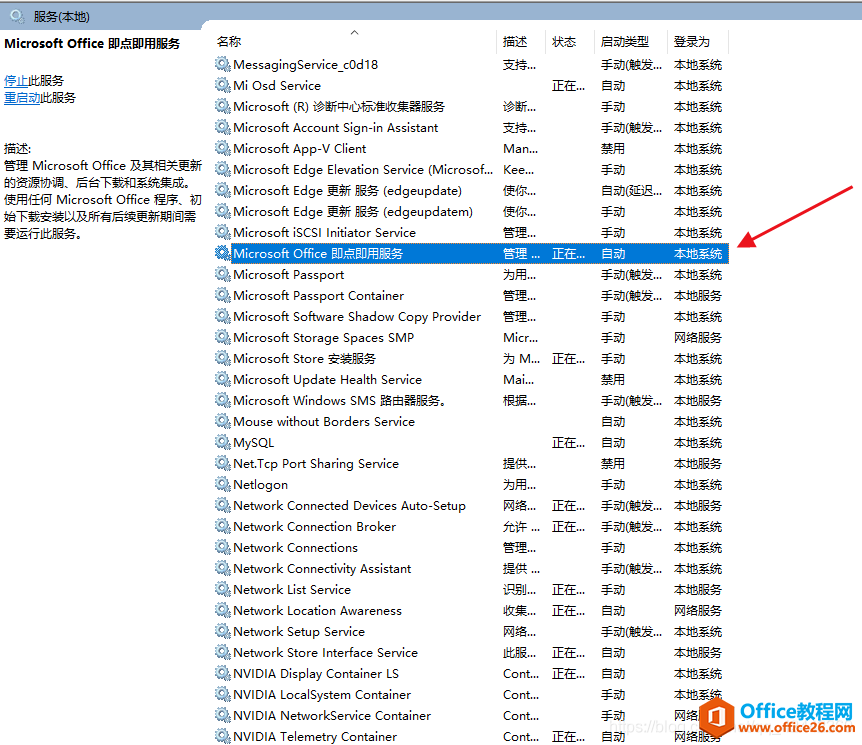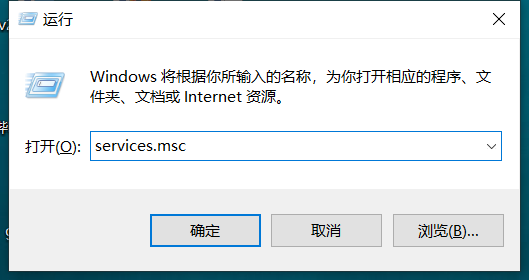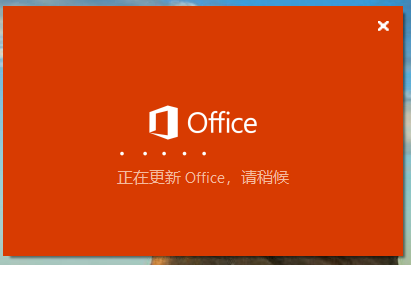中文说明:专业增强版/零售版/32位64位二合一镜像文件名称:ProPlus2019Retail.img文件大小:3.51GBSHA1:d850365b23e1e1294112a51105a2892b2bd88eb9SHA256:f5bea5517a3879792c39127db77aa7e766b4a9897bf52bed0c7e5dc70ccbc3f8下载......
What are Groups for Office 365 ?
Groups for Office 365 is a new way of working with your colleagues and people outside of your network. They focus on the collaboration experience rather than one specific technology like SharePoint.Let's take a look at how it works and if it's a contender to our beloved Team Sites.
The first step should be better understanding what we get when we subscribe to Office365.
New Collaboration and Team Site Experience
With therecent announcement by Microsoft on SharePoint 2016, they talked a lot aboutbringing "Experiences" to Office 365 instead of focusing onindividual technologies.
Today,when we think Team Collaboration, we often associate it with SharePoint TeamSites. However, it's often more than that. Not to mention that the needs fromour users have changed and evolved with a generation that is very comfortablewith technology.
If IT isgoing to restrict access or take too long to deliver a Team Site that won'tanswer their needs and ask for each document to be tagged with all the requiredmetadata, they may just look elsewhere.
Groups for Office 365 is one of these newexperiences that helps teams work together by joining Exchange and SharePointtogether in a simple way. Right now, they are still relatively new and needtime to mature into an enterprise solution. However, even today they present a greatalternative to Team Sites by helping to facilitate collaboration with themembers of the group.
This newservice can be broken down into different pieces or features to provide youwith an overall experience for collaboration.
•Conversations
•Calendar
•Notebook
•Files
Conversations between members and external users
The Groupcreator is automatically made into an Admin of the group and can add Members toit. These users have to be in the organization, however it does not limitconversations to them. But let's start at the beginning.
Membersof the Group can use the conversation feature to communicate with each other,not unlike the Team Site Newsfeed or a Yammer Group if you're familiar withthose.
Thisfeature actually uses Exchange and works very much like email. You can see eachnew conversation as an email sent to the Group's email address and people canreply to it within it.
Conversationsin Groups for Office 365
Asmentioned above, the group itself has an email address. This is fantastic andmeans you don't actually have to navigate to the group to interact with thesediscussions and use email if you like.
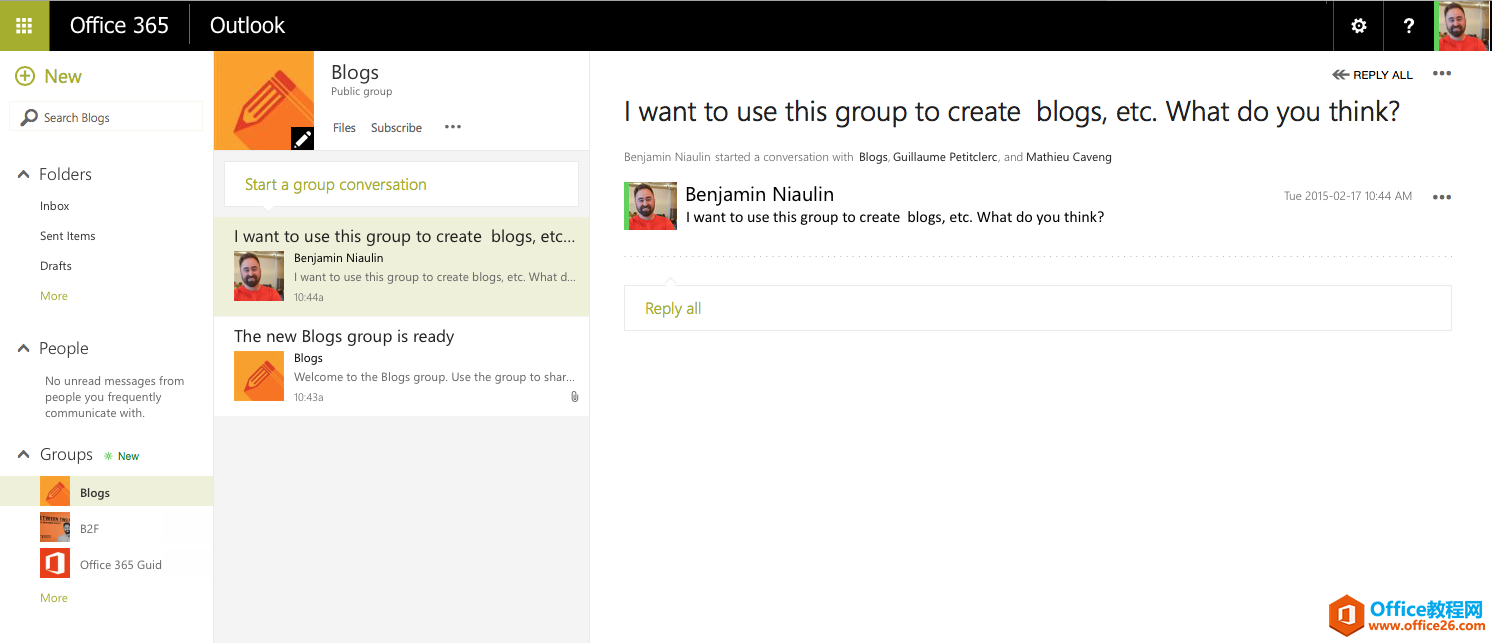
Remember,we're trying to provide the best collaboration experience and not focus on the technology, whatever you use, as long as it helps the team collaborate together and stays controlled by the organization.
You canalso allow the Group to receive email from people outside of the organization.Ideal if you want to work with external users without adding them to anypermissions, anywhere.
Calendar that surpasses the SharePoint Team Site's very own
TheSharePoint Team Site has a "cute" calendar, but it doesn't come closeto the one most of us are used to in Outlook.
Groupsfor Office leverage the Exchange (Outlook) Calendar instead of SharePoint's.This means we get all the benefits and features from a regular calendar. FromApps to integrations with existing applications there is a lot we can do.
Thedifferent Groups you belong to will appear as additional calendars you canoverlay with yours when visiting the Web App.
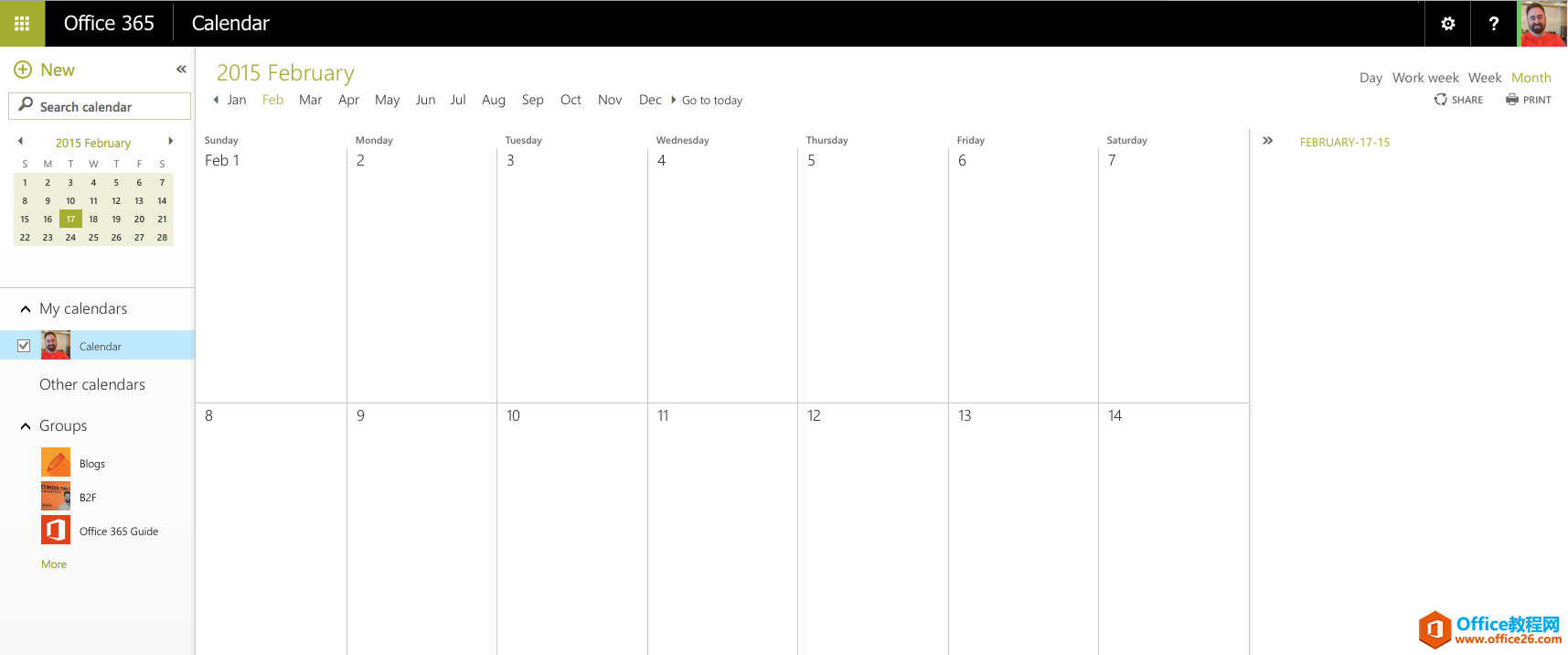
Right outof the box, you can add rooms from your organizations Address Book, integratewith Skype for Business (formerly Lync) to host an online meeting or even printthe calendar when you don't want to use the scheduling assistant.
And atthe end of the way, like in SharePoint, the Calendar does not belong to one person. Rather, it belongs to the Group itself so it'll always be there with upto date information regardless of the members joining and leaving.
OneNote giving each Group for Office 365 a way to collaboratequickly
There area lot of note taking apps out there, but it's hard to beat OneNote. One of thefirst apps that allowed seamless co-authoring in the Microsoft ecosystem andstill today the one that does it the best probably.
TheNotebook is created along with the SharePoint Site Collection created to storethe Files we'll cover below. It automatically grants all the members of theGroup the right to work in it.
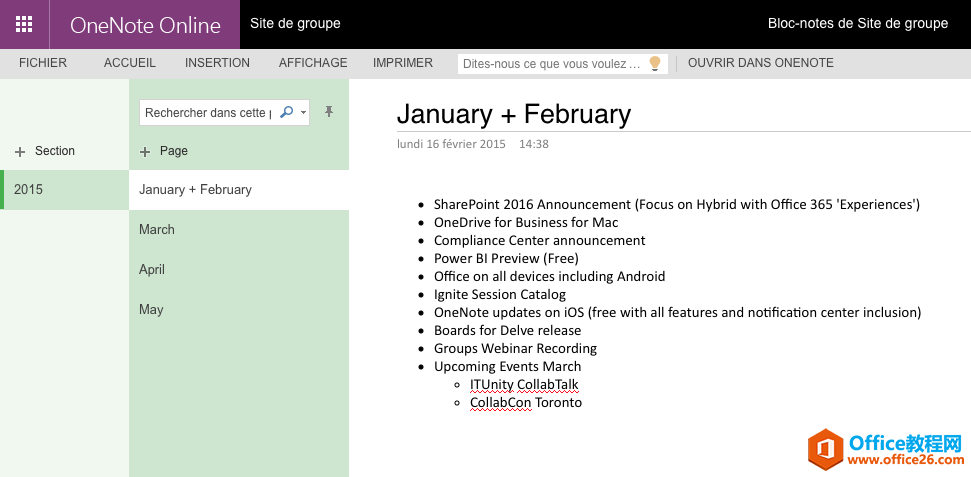
In the picture above, you can see that everyone in this group can work together to identify news we'd like to cover in our monthly SharePoint and Office 365 roundup.
AsOneNote is available on all devices, and even comes with Browser Extensions tocapture data online or through devices, it really makes it ideal for TeamCollaboration.
Work on Files quickly and easily with others
Last but definitely not least, this is a big one since working on files is often at the heart of collaboration. SharePoint Document Libraries are probably what made that platform so popular today. Groups for Office 365 takes SharePoint's best feature and introduces as "Files" under what looks like One Drive for Business.
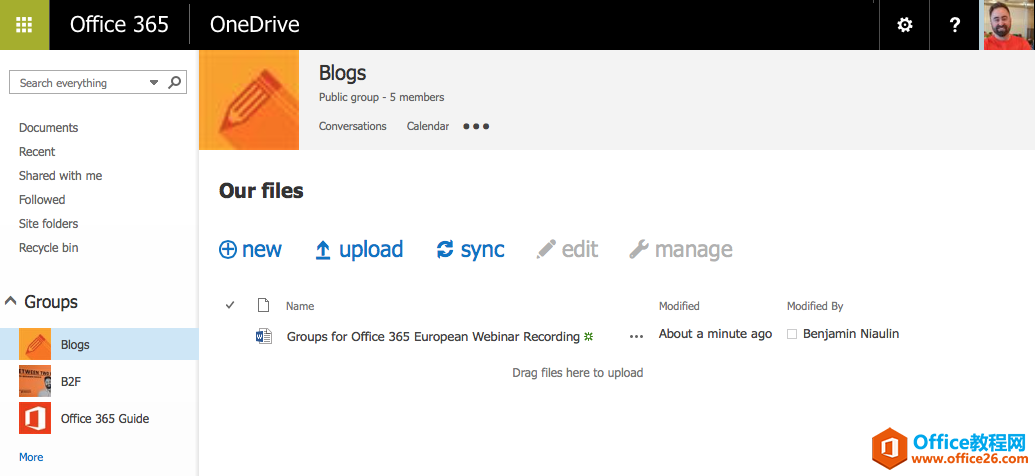
Whenever you create a new Group, a hidden SharePoint Site Collectionis created that counts against your tenant's storage quota.
I sayhidden because the Tenant Admin cannot see it in the list of Site Collectionsin his SharePoint Admin Center. They also share the same /sites/ managed path,so you should definitely be careful when creating Groups as it may impactfuture Sites you'd like to create.
*Note:We're told that they'll eventually be visible, so it may be different by thetime you read this.
Using thebrowser, there's no way to navigate to this Site Collection at the moment.Whether you type in the URL or click on the Files link in your Group, you willbe redirected to your OneDrive for Business page.
Make sureyou read up on what OneDrive for Business actually is before you continue, it'soften misunderstood and today is a much bigger brand than an actual feature.You can see it as a personal perspective on the files you need to work with,this from each and every individual using it.
Forexample, in the picture above you will see that I can access my: personaldocuments, recently worked on, explicitly shared with me or that I follow.Below, I can see the documents in my Groups for Office 365. However, it's important to realize they aren't actually in myOneDrive for Business.
Thefeatures for Files in its current state is however limited. It doesn't allow usto add metadata through columns or add workflows to them. At the moment, it's asimple solution, but in many situations is all we need considering manyexisting SharePoint are just glorified File Shares.
What you should watch out for when using Groups for Office 365
ThoughI'm really enjoying working using Groups instead of creating heavy SharePointTeam Sites every time, it doesn't mean it isn't still missing a few things. Thenew Microsoft I'm seeing however has me convinced that this is something that'sgoing to continue to grow in the right direction. Let's look at some of thesecurrent speedbumps, and again note that with the rapid changes in Office 365 itmay be different by the time you read this.
- Everyone can create Groups (and therefore SharePoint Site Collections) by default, but this can be changed using PowerShell.
- Limited Management of Groups available
- You cannot recover Deleted Groups, the only thing preventing you from losing all the data created within it is a pop up before you delete it.
- All Groups, both Public and Private, can be seen by everyone in the organization, so choose the name of the Groups wisely.
- Currently no compliance features. We've recently talked about SharePoint Compliance and though files are technically in a site, there isn't much you can do right now.
- No Retention Policies can be applied to your Groups, hopefully you find a way to keep good record of all the groups created and those that are no longer needed that should be deleted.
- You cannot access the Group's Recycle Bin to recover deleted files.
- Can't rename a Folder
- There are no migration to Groups scenarios supported. Whether you have Distribution Groups, Team Sites or File Shares you'd like to convert, it'll be a manual process or you'll have to use tools like Sharegate.
标签: WhatareGroupsforOffice365new
相关文章
- 详细阅读
-
Office2021 安装/更新和完美激活全教程同时附上黑暗模式设置教程详细阅读
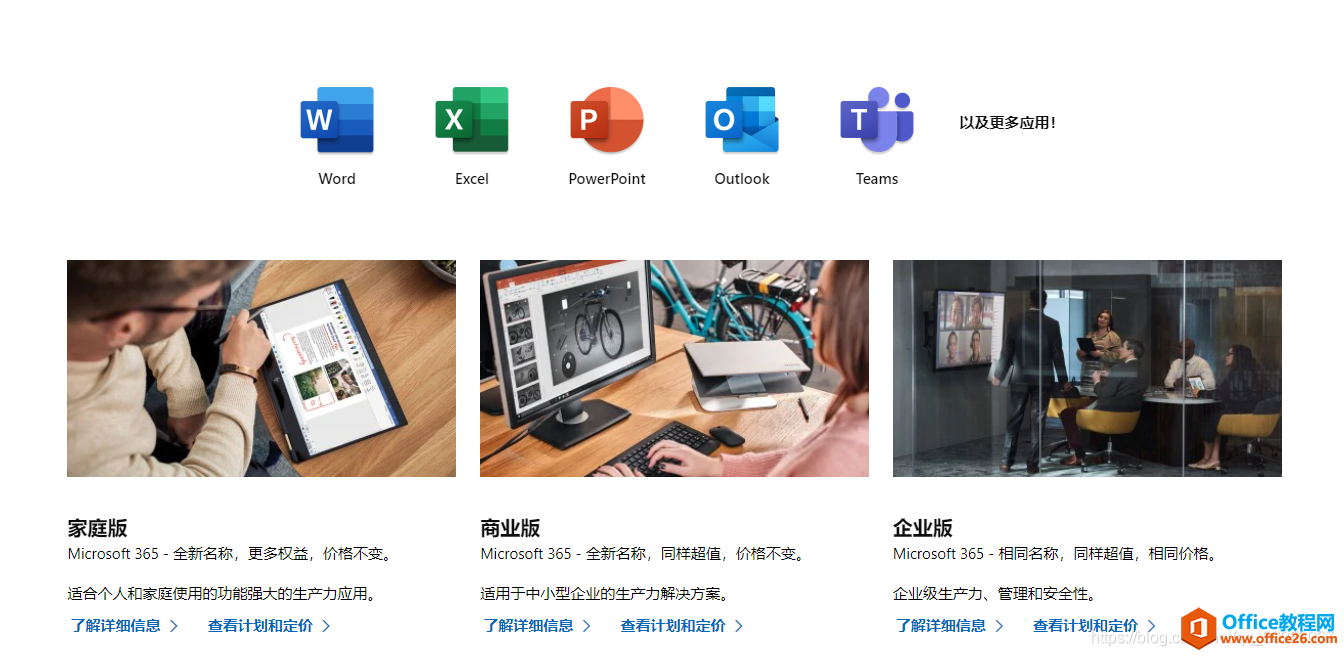
Office2021安装/更新和完美激活全教程同时附上黑暗模式设置教程Office2021改进1、office2021官方正式版提供了更好的工作环境。2、拥有更好的表格设计能力。3、在新版的Excel软件上增加了更好......
2022-04-19 72 Office office2021 office2021下载 office2021安装
- 详细阅读
- 详细阅读
- 详细阅读

